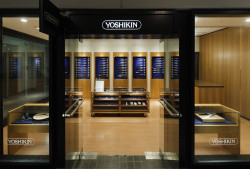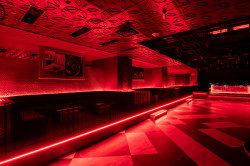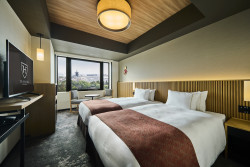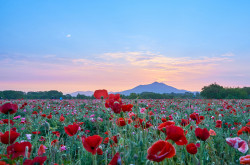
February 13, 2009
Fukuoka
Take a stroll through Japan's most architecturally forward-thinking city
By Metropolis
Originally published on metropolis.co.jp on February 2009

Courtesy of JNTO
Ask Honshu folk what Fukuoka means to them, and odds are you’ll get ramen or rock stars. After all, the city is the birthplace of Ayumi Hamasaki, and the heady odor of tonkotsu ramen is pervasive throughout downtown. But there is much more to this breezy port city of 1.5 million people than just soup and song.
Present-day Fukuoka grew from two independent cities: a port town called Hakata, which was run by merchants, and a town ruled by samurai, called Fukuoka. And though they merged in 1889 and took the name “Fukuoka” (at the behest of the samurai), each district has retained a piece of its original character. Hakata is still the financial hub and home to lively entertainment quarters, while “old Fukuoka,” which lies across the Nakasu River, is known as Tenjin and brims with up-market department stores, restaurants and chic bars.

Photo by Simon Rowe
Beyond Tenjin, out past the docks of Hakata Port and over a pan-flat expanse of reclaimed land, a new city has emerged: Momochi. The first thing visitors notice here is the lack of overhead wiring. Hakata and Tenjin’s streets are strung with bird nests of telephone and electricity cables, but not so in this leafy city. Residents and businesses, many of them IT-oriented, demand high-speed networks, and these are neatly tucked away underground—a rarity in Japan.
But it is aboveground that one really glimpses the future of Japanese urban planning. Office towers that could be spaceships, apartment blocks that look like extraterrestrial villages, and private businesses whose vibrant color schemes make them appear almost edible—these are the designs of some the world’s most dynamic architects who have taken advantage of Fukuoka’s building boom to showcase their ideas. A leisurely one-hour stroll along the Momochi shoreline will take you past the creations of Steven Holl, Oscar Tusquèts and Rem Koolhaas, to name just a few.

Photo by Simon Rowe
Slicing the Hakata Bay breezes like a huge fin at the east end of Momochi beach is Cesar Pelli’s Sea Hawk Hotel, the largest in Kyushu. Pelli, who designed Kuala Lumpur’s Petronas Towers, let wind and water themes shape his design and added a vast typhoon-proof glass atrium, which resembles a cone shell opening on to the sea.
Fukuoka Tower is the next building of note on Momochi’s skyline. Its swordfish-like profile and the 8,000 reflective glass panels resemble scales of a fish. Outstanding 360-degree views of the city are only a 70-second elevator ride from the ground floor to the 123m-high observation deck. (Film buffs might recognize the tower from 1994’s Godzilla vs. SpaceGodzilla, in which it was, predictably, pulverized.)
Continuing west, one enters Momochi’s Nexus Tower, a building whose superstructure appears to have been turned inside-out with an intriguing rocket-tail design cresting its rooftop. Doubling back towards the Sea Hawk will take you past the silver silo-sized modules of the Hyatt residential apartments, a futuristic take on long-term hotel accommodation.
While more than a few Fukuokans aspire to enjoy the spacious lifestyles of these seaside developments, many seem content with their lot in the quiet leafy streets of the older downtown quarters. From an outsider’s point of view, this very contrast makes Fukuoka appealing.
From Tokyo station, hop on the shinkansen bound for Fukuoka’s Hakata station. Travel time is around 4-5 hours each way. There are also daily direct flights from Haneda Airport. Dining out is a matter of following your nose: try the yatai along the Naka River for atmosphere, or one of the lively izakaya in Nakasu for authentic local cuisine. Rooms at the Sea Hawk Hotel (www.hawkstown.com/hotel) start from ¥10,000/pp, but Hakata and Tenjin offer several cheaper and conveniently located business accommodations. See www.welcome-fukuoka.or.jp/lang/english for more info.

Courtesy of JNTO







